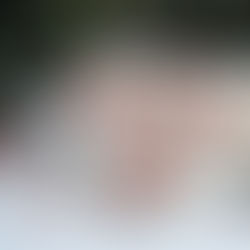Flying Geese - a tutorial
- Allison Spence
- Oct 16, 2017
- 3 min read
I'm working on a few projects and all require that I sew Flying Geese units. Flying Geese are not my favourite block to sew. I find them fussy and boring to construct. But, now I've got these projects that are just screaming for Flying Geese. But don't worry. I've found a FANTASTIC quick and super easy method of making Flying Geese. I thought I'd write a bit of a tutorial that I can reference later and you can follow.

A Flying Geese unit or block is traditionally twice as wide as it is high.

The above drawing shows the unit as 2" high and 4" wide. The unit could be 1½" high and 3" wide. Just double the height for the width.
This method uses 2 squares, a background and a geese fabric. Each set of 2 squares makes 4 Flying Geese units!
Step 1: Determining Size of units.
Some super-simple math first.

Start with your desired finished measurements; in this case we're going with a 2" x 4" flying geese unit.
Add 1½" to the width measurement: 4" + 1½" = 5½". This is the size of square you will cut from your geese fabrics.
Now, add another 1½" to this measurement; 5½" + 1½" = 7". This is the size of the square you will cut from your background fabric.
Remember that each set of squares will make 4 geese units. You will need to do more math to figure out how many geese units you want. I'll leave that up to you.
Step 2: First Seams

Place fabric squares right sides facing together. Draw a line diagonally through the pair. I use the 45 degree lines on my cutting mat to help me center the geese fabric on the background fabric.

Sew ¼" on both sides of the drawn line. Press the seams to set the stitching and cut apart on the drawn line.

Press the seam allowances to the background fabric.
Step 3: Second Seam

Now comes the tricky part! With right sides facing, match the un-sewn corners. The seams will not match up.

Draw a diagonal line from one un-sewn corner to the other. In this case I needed to use a dark marker and a lighter marker because of the high contrast in my fabrics.
Sew on both sides of these lines.
Step 4: Clipping and Pressing

Press the seams to set the stitches and cut apart on the drawn lines.
Fold each triangle in half and make a snip at the seam line.

Carefully press the seam allowances to the background fabric. Can you see how the seam allowances flip on the left sample? The right shows how everything lays super flat once the seams have been pressed.
Step 5: Trimming the Geese units

Let's review. We are making Flying Geese units that will finish at 2" high and 4" wide. To cut the units to size we need to add ½" seam allowance (¼" on each side).
Our magic numbers now become 2½" x 4½". Don't forget! Write it somewhere clearly so you don't accidentally trim these units too small. I won't tell you why I'm mentioning this!

Start trimming by lining a ruler with the 45° line along the seam of a geese fabric and the ¼" mark at the point of the seam. Trim this edge.

Work your way around the unit, remembering your required measurements and trim each side..

Arrange and sew the units together.

Good trimming and a good ¼" seam will have the tip of one goose unit meeting the bottom of another. Check your seam allowance and stitching if you have any issues.
Here is a great video I watched as I was getting ready for this tutorial. I've never, ever watched a Eleanor Burns video before. She's a scream!!!!!






















